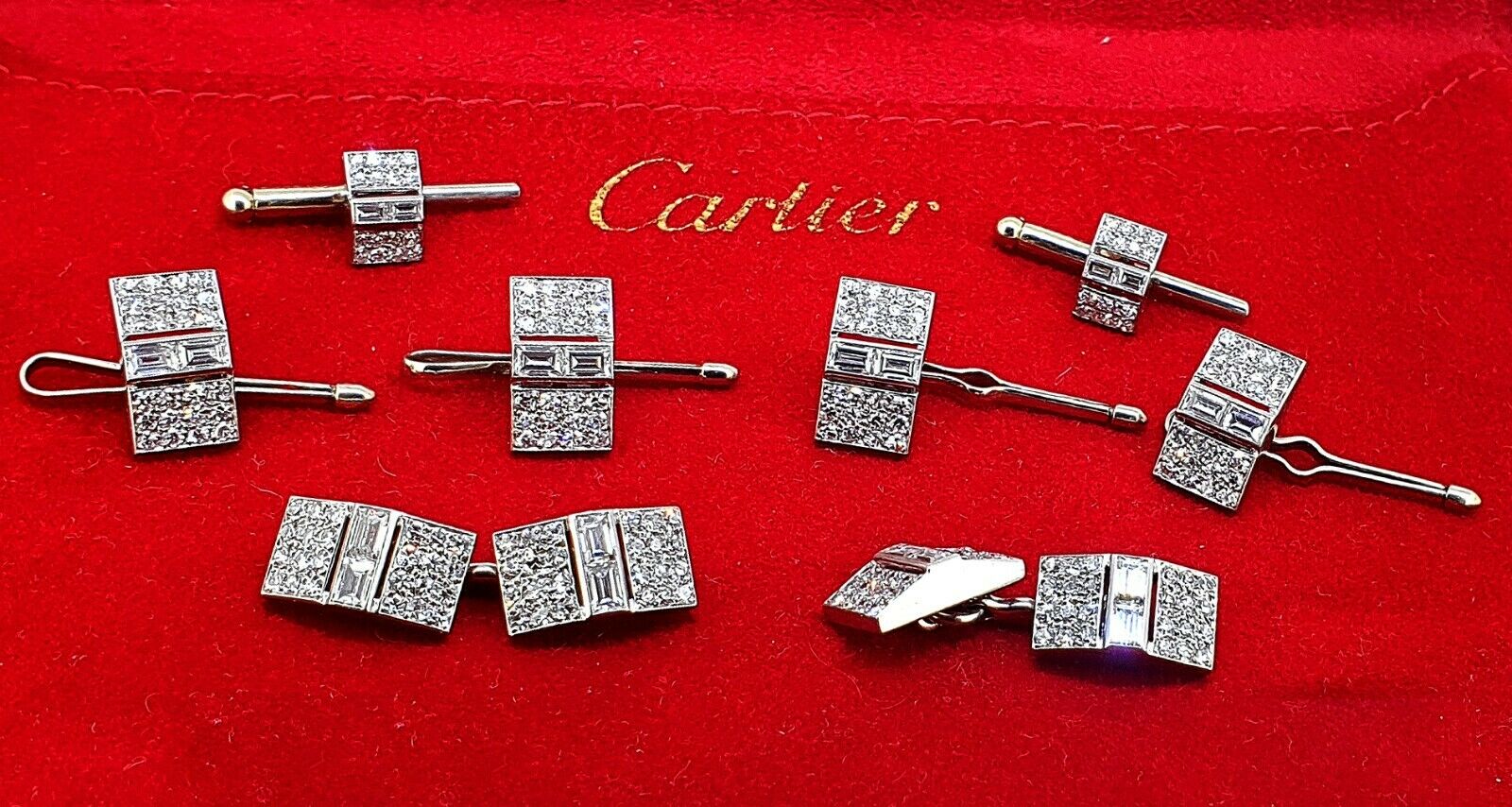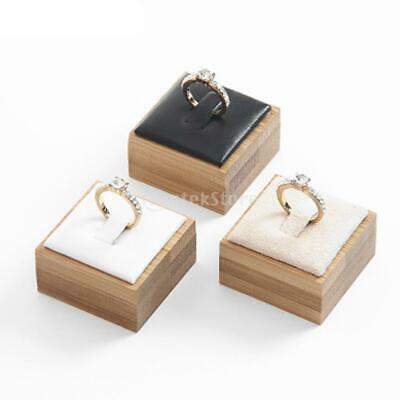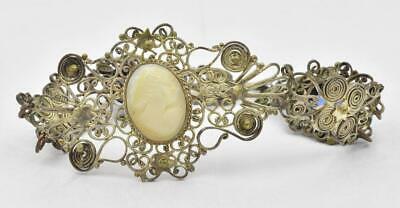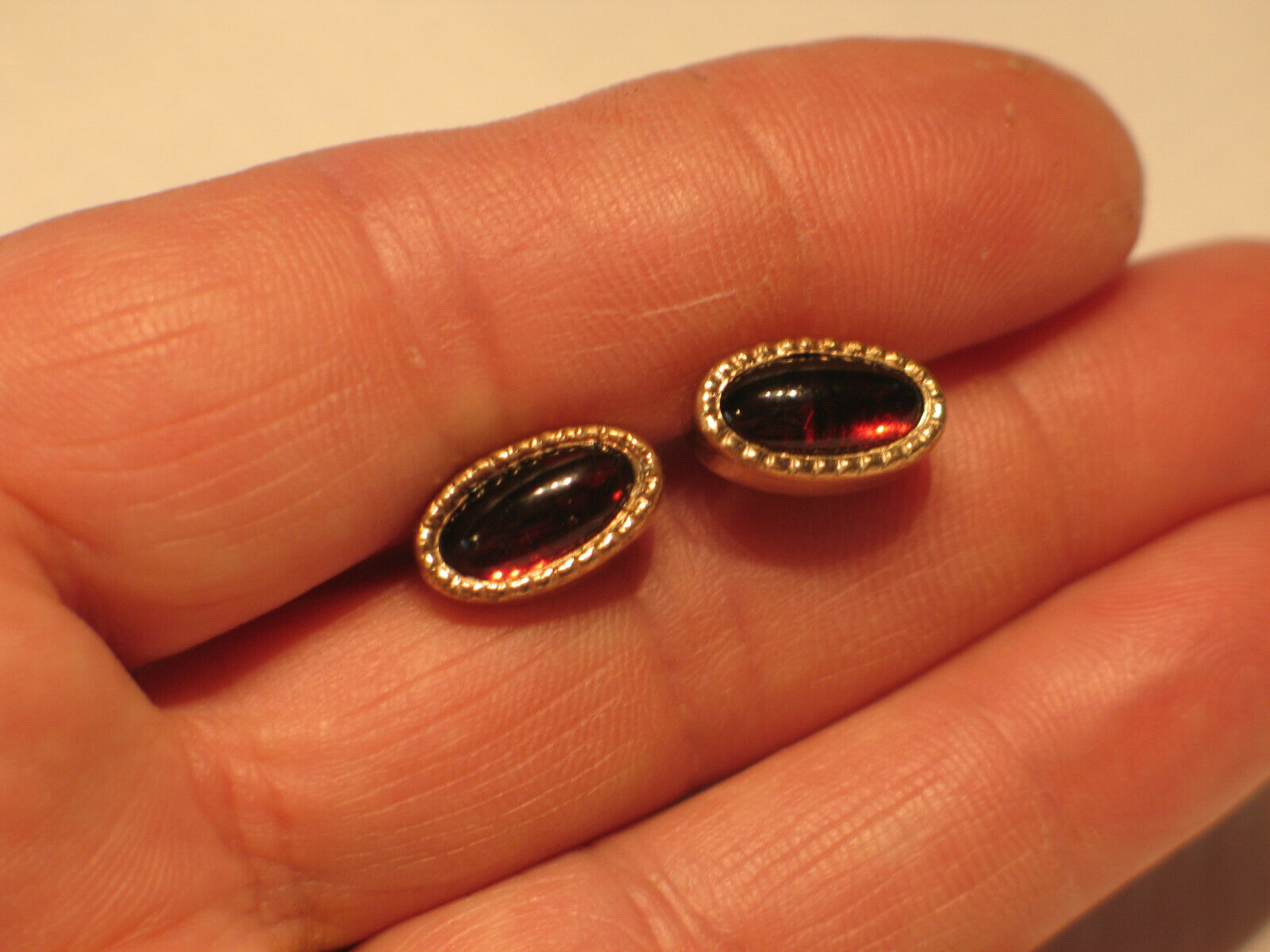-40%
CARTIER Art Deco ca.1925 Diamond Cufflinks Dress Set in Platinum Pyramid Shape
$ 14784
- Description
- Size Guide
Description
An important and rare vintage CARTIER PARIS Art Deco men's diamond dress set in platinum and 18K white gold, ca. 1925.The set in a geometric pyramid shape, comprising a pair of cufflinks, four buttons and two shirt studs.
The design of each cuff and button resembles the shape and style of Inca and Aztec pyramids and somewhat stylistically similar to the Pyramid of the Sun and the Pyramid of the Moon at Teotihuacán in central Mexico, the Castillo at Chichén Itzá in the Yucatan, the Great Pyramid in the Aztec capital of Tenochtitlan, the Pyramid at Cholula and the Inca's great temple at Cuzco in Peru.
There is a total of 224 single cut and 20 baguette cut diamonds with an estimated combined weight of about 4.20 carats. The cuffs and buttons measuring 13.2x7.5mm, while the studs being slightly smaller and measuring 9x6mm, with a gross weigh of 24.20 grams. Each section signed Cartier Paris, hallmarked for platinum and gold with French hallmarks, numbered with inventory number L4883, as well as bearing partially indistinct maker's marks (first letter being 'D'). The set comes in original Cartier red velvet pouch.
For reference, similar Cartier Art Deco, circa 1925 diamond dress sets of this quality, diamond weight, shape, style and design have sold at major auction sales sometimes well above the US0,000 mark.
Absolutely scarce antique collector jewelry and men's accessories set and one of the rarest and much sought after Cartier Art Deco platinum and diamond cufflink and jewels sets.
Please, kindly bear in mind that due to several business locations that we occupy within the EU, some of our items could be shipped from alternative European member state, but in no case this would affect the shipping, handling and delivery times, nor it will affect in any sense the quality and appearance of the items purchased and delivered.
Art Deco derived its name from the World's fair held in Paris in 1925, formally titled the Exposition Internationale des Arts Décoratifs et Industriels Modernes, which showcased French luxury goods and reassured the world that Paris remained the international center of style after WWI. Art Deco did not originate with the Exposition; it was a major style in Europe from the early 1920s, though it did not catch on in the U.S. until about 1928, when it quickly modulated into the Streamline Moderne during the 1930s, the decade with which Americanized Art Deco is most strongly associated today. Paris remained the center of the high end of Art Deco design, epitomized in furniture by Jacques-Emile Ruhlmann, the best-known of Art Deco furniture designers and perhaps the last of the traditional Parisian ébénistes, and Jean-Jacques Rateau, the firm of Süe et Mare, the screens of Eileen Gray, wrought iron of Edgar Brandt, metalwork and lacquer of Swiss-Jewish Jean Dunand, the glass of René Lalique and Maurice Marinot, clocks and jewelry by Cartier. Art Deco was an innovative design style popular in the 1920s and 1930s. Its sleek, streamlined forms conveyed elegance and sophistication. It was the age of the Flapper, the Jazz and the Machine Age. Materials used ranged from rubies, gold, and pearls to plastic, chrome and steel. Platinum was the new luxury metal used with opaque stones like coral, jade, onyx and lapis lazuli. Costume jewelry became even more popular and outrageous. Trend-setting couturiers were Coco Chanel and Elsa Schiaparelli. Influences were Pharaonic Egypt, the Orient, tribal Africa, Cubism, Futurism, machines and graphic design. However, jewelry of the 1920's and 30's was in thrall to geometry: circles, arcs, squares, rectangles and triangles and so on. René Lalique, who created glass jewelry in the 1920's and 30's, created romantic designs from nature. The Cartier firm, founded in 1847, reached dizzying heights of Art Deco splendor under the direction of Louis Cartier (1874 - 1945). His fascination with exotic motifs led to the creation of diamond, ruby and platinum jewels of unsurpassed design and quality.


















